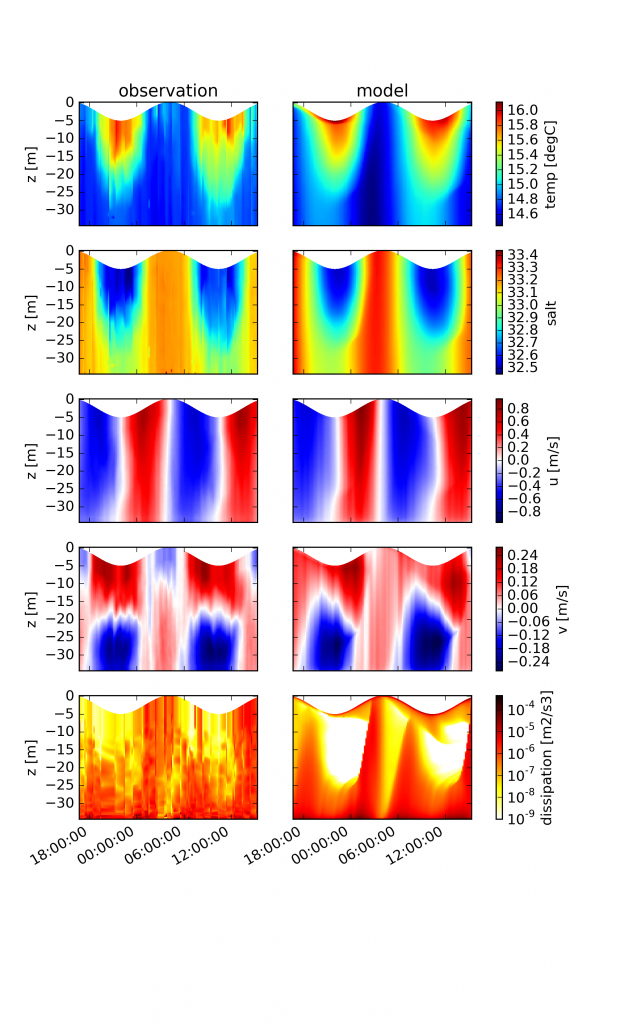Liverpool Bay
The observations for this scenario have been carried out by
Rippeth et al (2001}
in the** Liverpool Bay ROFI** on July 5 and 6, 1999 at a position of 53 deg
28.4’N, 3 deg 39.2’W. The dissipation rate measurements were carried out with a
FLY shear probe mounted on a free-falling profiler. Sensors for temperature and
conductivity attached to the profiler give detailed information on the vertical
density distribution during each cast. Nearby, an ADCP was mounted on the
bottom, giving information on the vertical velocity structure. Some
accompanying CTD casts were made in order to achieve estimates for the
horizontal gradients of temperature and salinity. The surface fluxes are
calculated externally by means of bulk formulae of
Kondo (1975)
, where the sea
surface temperature from measurements (FLY profiler) has been used. The bed
roughness has been estimated from near-bed ADCP measurements as z0 = 0.0025 m
by means of fits to the law of the wall. The external pressure gradient due to
surface slopes is estimated according to a method suggested by
Burchard (1999)
by means
of adjustment to near bed velocity observations. The horizontal salinity and
temperature gradients for a typical summer situation are prescribed. The
observations and model results show a clear SIPS (Strain-Induced Periodic
Stratification) cycle with mixed conditions after flood (at high water) and
stratified conditions after ebb (low water). The numerical simulations of this
scenario have been described in
Simpson et al. (2002).
[caption id=“attachment_592” align=“aligncenter” width=“633”] Temperature, salinity, westward velocity, northward velocity and dissipation
rate from observations (left) and model results (right) for Liverpool Bay
during a SIPS situation between July 5 (16:30h) and July 6 (17:00h) 1999 in
Liverpool Bay. This plot was created with
liverpool_bay.py.
[/caption]
Temperature, salinity, westward velocity, northward velocity and dissipation
rate from observations (left) and model results (right) for Liverpool Bay
during a SIPS situation between July 5 (16:30h) and July 6 (17:00h) 1999 in
Liverpool Bay. This plot was created with
liverpool_bay.py.
[/caption]